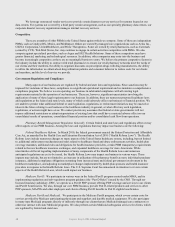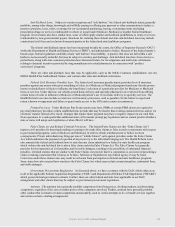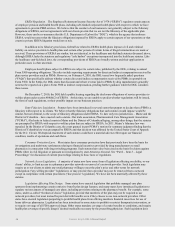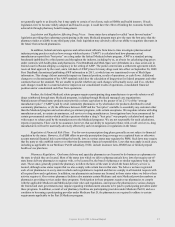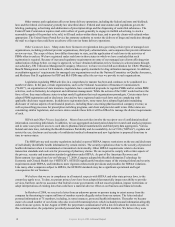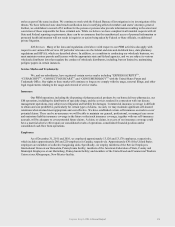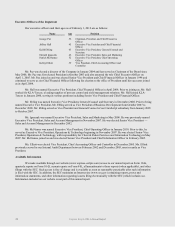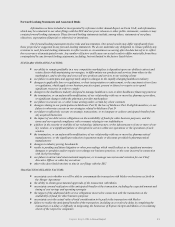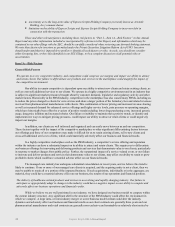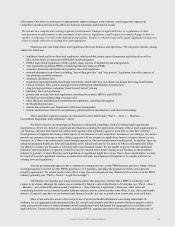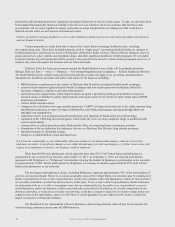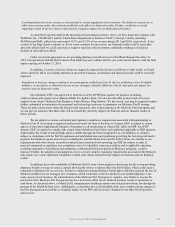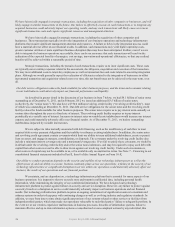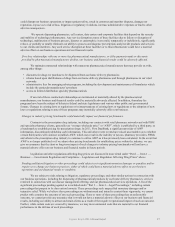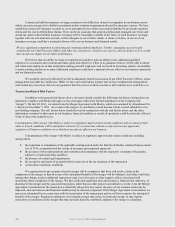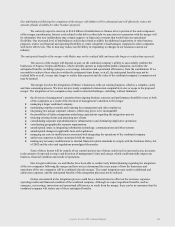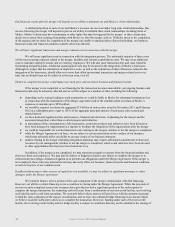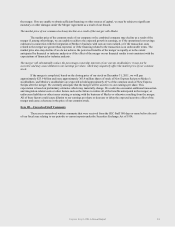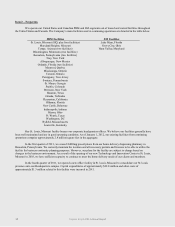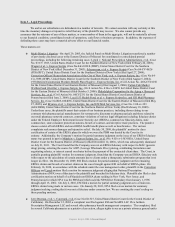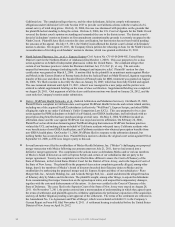Express Scripts 2011 Annual Report Download - page 26
Download and view the complete annual report
Please find page 26 of the 2011 Express Scripts annual report below. You can navigate through the pages in the report by either clicking on the pages listed below, or by using the keyword search tool below to find specific information within the annual report.
Express Scripts 2011 Annual Report
24
protected health information and new legislation is proposed from time to time in various states. To date, no such laws have
been adopted that materially impact our ability to provide services, but there can be no assurance that federal or state
governments will not enact legislation, impose restrictions or adopt interpretations of existing laws that could have a
material adverse effect on our business and financial results.
Policies designed to manage healthcare costs or alter healthcare financing practices may adversely impact our business
and our financial results.
Certain proposals are made from time to time in the United States to manage healthcare costs, including
prescription drug costs. These have included proposals such as ―single-payer‖ government funded healthcare, changes in
reimbursement rates, restrictions on access or therapeutic substitution, limits on more efficient delivery channels, taxes on
goods and services, price controls on prescription drugs, and other significant healthcare reform proposals. We are unable
to predict whether any such proposals will be enacted, or the specific terms thereof. Certain of these proposals, however, if
enacted, may adversely impact our business and our financial results.
In March 2010, the federal government enacted the Health Reform Laws, which will be gradually phased in
through 2020 (see Part I — Item 1 — Business — Government Regulation and Compliance – Federal Healthcare Reform).
The Health Reform Laws contain many provisions that directly or indirectly apply to us, our clients, pharmaceutical
manufacturers, healthcare providers and others with whom we do business, including:
• PBM disclosure requirements in the context of Medicare Part D and the anticipated health benefit exchanges
• creation of government-regulated health benefits exchanges and new requirements for health plans offered by
insurance companies, employers and other plan sponsors
• medical loss ratio requirements, which require insurers to spend a specified percentage of premium revenues on
incurred claims or healthcare quality improvements, and require some of our clients to report certain types of PBM
proprietary information
• various health insurance taxes
• changes to the calculation of average manufacturer price (―AMP‖) of drugs and an increase in the rebate amounts drug
manufacturers must pay to states for drugs reimbursed by state Medicaid programs, including through Medicaid
managed care organizations
• imposition of new fees on pharmaceutical manufacturers and importers of brand-name prescription drugs
• expansion of the 340B drug discount program, which limits the costs of certain outpatient drugs to qualified health
centers and hospitals
• closing of the so-called donut hole under Medicare Part D by lowering beneficiary coinsurance amounts
• elimination of the tax deduction for employers who receive Medicare Part D retiree drug subsidy payments
• mandated changes to client plan designs
• changes to certain healthcare fraud and abuse laws
If we lose our relationship, or our relationship otherwise changes in an unfavorable manner, with one or more key
pharmacy providers, if significant changes occur within the pharmacy provider marketplace, or if other issues arise with
respect to our pharmacy networks, our business could be impaired.
More than 60,000 retail pharmacies, which represent more than 95% of all United States retail pharmacies,
participated in one or more of our networks at December 31, 2011. As of January 1, 2012, our network participation
agreement with Walgreen Co. (―Walgreens‖) terminated, reducing the number of pharmacies participating in our networks
to approximately 55,000. Absent participation by Walgreens, we continue to maintain approximately 85% of all United
States retail pharmacies in our networks.
The ten largest retail pharmacy chains, excluding Walgreens, represent approximately 38% of the total number of
stores in our largest network. However, in certain geographic areas of the United States, our networks may be comprised of
higher concentrations of one or more large pharmacy chains. Our contracts with retail pharmacies, which are non-exclusive,
are generally terminable on relatively short notice by either party. If one or more of the larger pharmacy chains terminates
its relationship with us, or is able to renegotiate terms that are substantially less favorable to us, our members’ access to
retail pharmacies and/or our business could be materially adversely affected. In addition, the overall composition of our
pharmacy networks, or reduced access under our networks, could have a negative impact on our claims volume and/or our
competiveness in the marketplace, cause us to fall short of certain guarantees in our contracts with clients, or otherwise
impair our business or financial condition.
The likelihood of our relationships with such pharmacy chains being adversely affected may be increased to the
extent that large pharmacy chains enter the PBM business.


